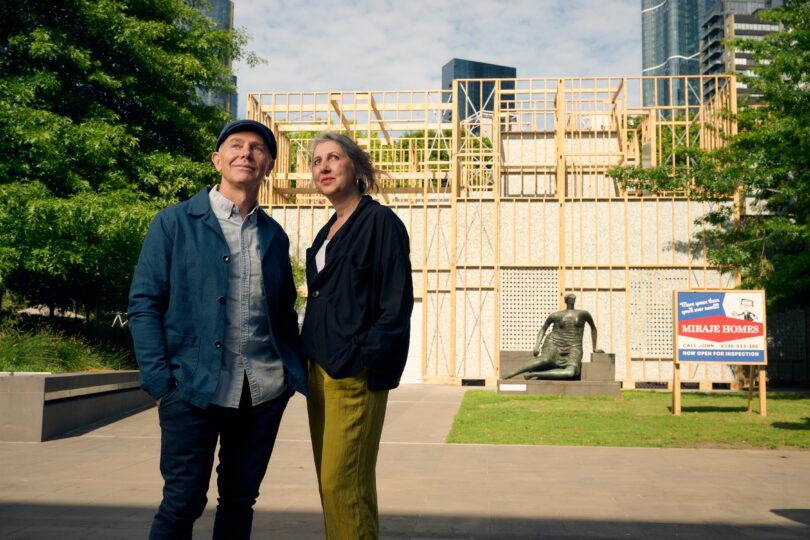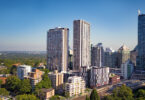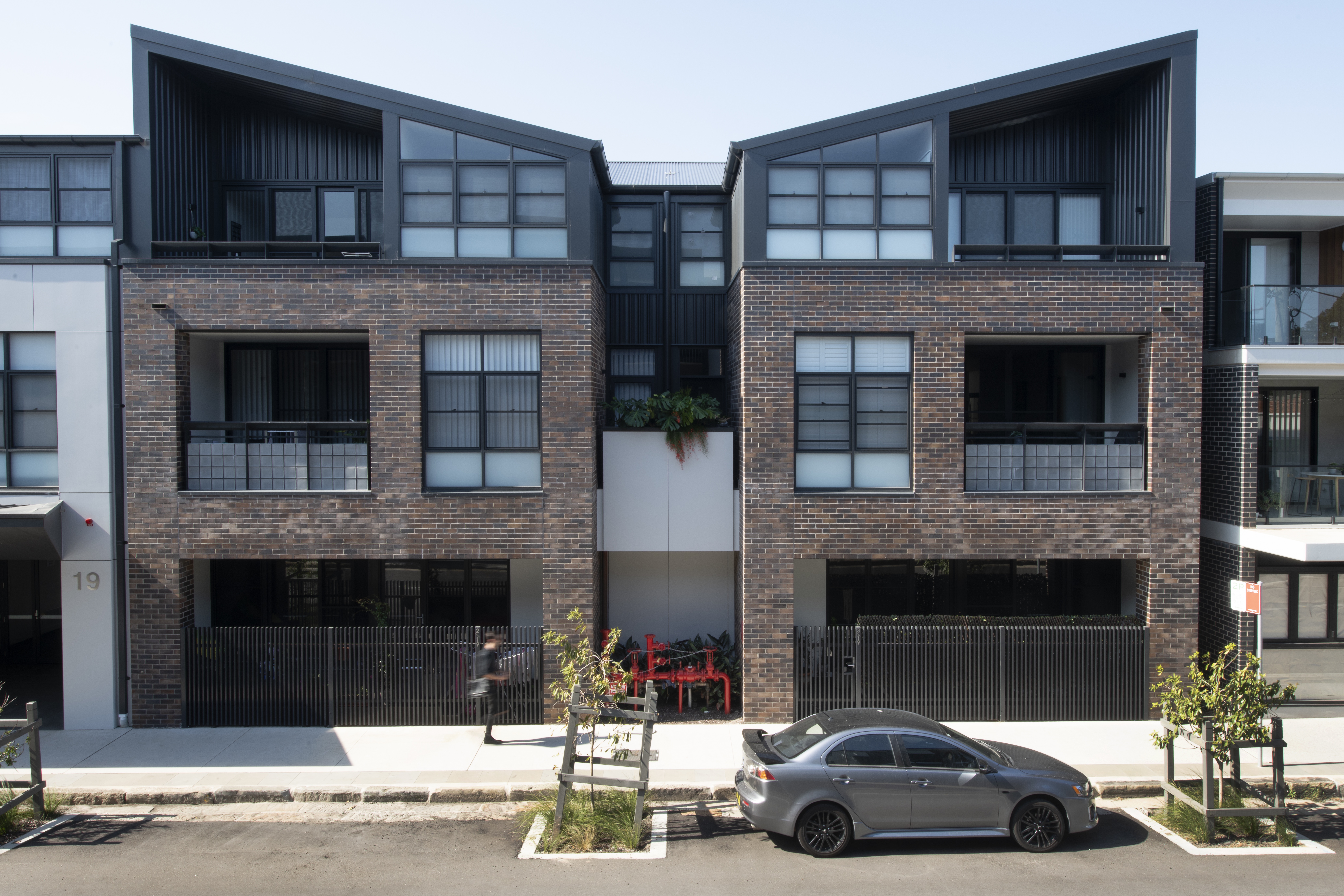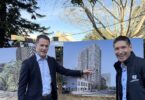As visitors pass through the yawning garage door of the larger house, they move through a voluminous maze of rooms and corridors. They emerge into a smaller space constructed entirely of timber studs packed tightly together to create a timber haven. The meditative wooden retreat presents a physical and intellectual point of reflection for visitors; a glimpse into an alternative housing future.
The entire project is constructed of just two primary materials, chosen to reflect current housing construction methodologies. The frame of the larger house and the maze-like walls within are made from framing pine, a ubiquitous building material. While silver flecked Saveboard, made from 100 percent post-consumer waste, forms the skin of the labyrinth, symbolising the too-thin layer of foil insulation of many new houses built in Australia today.
While future-focused, the small scale home in this project is inspired by and references Melbourne’s housing solutions of the twentieth century, including the terrace houses of the 1900s, which offered density and community; Carlton’s Cairo apartment complex, which provided small-scale apartments on the city’s doorstep for working single men; and the mid-century Small Homes Services, which delivered affordable, architect-design houses in under 100 square metres.
By drawing attention to the historical precedent for smaller-scale housing, the architects highlight that their proposal is not part of some unattainable imagined future, but rather a return to a more thoughtful and appropriate scale of living that responds to the needs of others and the planet.
Tony Ellwood AM, Director, NGV said: ‘Through its clever play on scale and materials, this thought-provoking work of architecture sparks a fascinating conversation about housing and sustainability in this country.’
Ewan McEoin, Senior Curator, Contemporary Art, Design and Architecture, NGV said: ‘Home Truth speculates that overconsumption of space and materials translates into ecological and social consequences – for both us and the planet. But importantly, it offers a provocative vision of a new way of thinking about building – seeing the value of living in spaces that are of smaller scale – a vision that prioritises people and planet.’
Home Truth was selected from a strong shortlist consisting of Breathe with Tom Supple; Office of Culture, Technology and Architecture (OCTA); and Snooks + Harper, N’arwee’t Carolyn Briggs, and Philip Samartzis.
The NGV Architecture Commission 2024:
Home Truth will be on display from 13 November 2024 to April 2025 at NGV International, St Kilda Road. Entry is FREE. For further information, please visit the NGV website:
NGV.MELBOURNEImage credit (L-R): Portrait of Jeremy McLeod, Co-Founder and Design Director, Breathe Architecture, with the 2024 Architecture Commission: Home Truth by Breathe on display at NGV International, Melbourne from 13 November 2024 – April 2025, Photo: Eugene Hyland; Installation view of the 2024 NGV Architecture Commission: Home Truth by Breathe on display from 13 November 2024 until April 2025 at NGV International, Melbourne. Photo: Derek Swalwell
ABOUT THE NGV ARCHITECTURE COMMISSION SERIES
Since its debut in 2016, the annual NGV Architecture Commission has enlivened the NGV Garden, creating a place for community, programs and events, as well as respite from the summer sun. Ranging from a pink pool inspired by Australia’s inland salt lakes to a thought-provoking meditation on the architectural legacy of Traditional Owners, the 2024 Architecture Commission marks the series’ ninth iteration.
The NGV Architecture Commission has previously been designed by Nic Brunsdon (2023), Adam Newman and Kelvin Tsang (2022), Taylor Knights + James Carey (2021), Yhonnie Scarce and Edition Office (2019), MUIR + OPENWORK (2018), Retallack Thompson and Other Architects (2017), M@ STUDIO Architects (2016), John Wardle Architects (2015).
The NGV Architecture Commission Design Competition process is developed and delivered by CityLab.
ABOUT BREATHE
Breathe is a Melbourne-based architecture and design studio recognised for its commitment to sustainable, enduring and purposeful architecture through a relentless questioning of the status quo.
This is encapsulated in its housing projects, including The Commons, which set a new benchmark for sustainable living, featuring a car-free development, rooftop gardens, rainwater harvesting, and energy-efficient systems. In 2014 The Commons won the Victorian Architecture Medal and the National Architecture medal in both Multiple Housing and Sustainability. It also went on to win a further ten State and National awards and became a beacon for change in the Multiple Housing sector.
Through advocacy and activism, Breathe identifies broader opportunities for architects to transform the built environment. Breathe is deeply engaged in advocating for better housing policies and environmental standards. They are the driving force behind the Nightingale Housing model, a not-for-profit organisation that seeks to revolutionise the housing market by prioritising affordability, sustainability, and community. They have also developed a range of guides that offer accessible introductions to sustainable building design — free to read, share and copy on their website.









